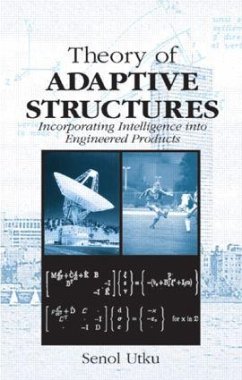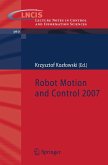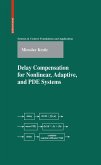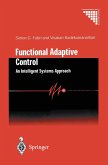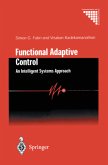This book furnishes the basic theory needed by the modern structural engineer in actively controlling the behaviour of engineering systems. The book also examines the advance of materials technology and the advent of powerful, reliable microprocessors. Topics include the design and control of discrete parameter adaptive structure, the influence of dynamic distrubances and control loads, and an introduction to distributed parameter adaptive. TOC:Preface.- Introduction.- Excitation-response relations, static case.- Active control of response, static case.- Statically determinate adaptive structures.- Statically indeterminate adaptive structures.- Excitation-response relations, dynamic case.- Inverse relations, dynamic case.- Active vibraion control, autonomous systems.- Active vibration control, nonautonomous systems.- Vibration control in buildings under wind excitations.- Vibration control in buildings under seismic excitation.- Introduction to disbributed parameter adaptive structures.- Appendix A: Linear vector spaces of n-Tuples.- Appendix B: Algebraic Eigenvalue problem.
Theory of Adaptive Structures provides the basic theory for controlling adaptive structures in static and dynamic environments. It synthesizes well-established theories on modern control as well as statics and dynamics of deformable bodies. Discussions concentrate on the discrete parameter adaptive structures dealing with actuator placement, actuator selection, and actuation computation problems - keeping these structures at close proximity of any chosen nominal state with the least energy consumption. An introduction to the distributed parameter adaptive structures is also provided.
The book follows that modern trend in research and industry striving to incorporate intelligence into engineered products through microprocessors that are becoming smaller, faster, and cheaper at astounding rates. Not using them in engineered products may become an enormous liability.
Resulting from the advances in materials technology on sensors and actuator technologies as well as the availability of very powerful and reliable microprocessors, there is an ever-increasing interest in actively controlling the behavior of engineering systems. Engineers and engineering scientists must revive and broaden their activities to maximize applications for predicting and controlling the behavior of deformable bodies.
Topics include:
An introduction to adaptive structures
Incremental excitation-response relations in static and dynamic cases
Active control of response in static case
Statically determinate adaptive structures
Statically indeterminate adaptive structures
Active vibration control for autonomous and non-autonomous cases
Active control against wind
Active control against seismic loads
Distributed parameter adaptive structures
The technology of adaptive structures has created an environment where the analysis, not the computation, of structural response - du
Theory of Adaptive Structures provides the basic theory for controlling adaptive structures in static and dynamic environments. It synthesizes well-established theories on modern control as well as statics and dynamics of deformable bodies. Discussions concentrate on the discrete parameter adaptive structures dealing with actuator placement, actuator selection, and actuation computation problems - keeping these structures at close proximity of any chosen nominal state with the least energy consumption. An introduction to the distributed parameter adaptive structures is also provided.
The book follows that modern trend in research and industry striving to incorporate intelligence into engineered products through microprocessors that are becoming smaller, faster, and cheaper at astounding rates. Not using them in engineered products may become an enormous liability.
Resulting from the advances in materials technology on sensors and actuator technologies as well as the availability of very powerful and reliable microprocessors, there is an ever-increasing interest in actively controlling the behavior of engineering systems. Engineers and engineering scientists must revive and broaden their activities to maximize applications for predicting and controlling the behavior of deformable bodies.
Topics include:
The technology of adaptive structures has created an environment where the analysis, not the computation, of structural response - du

